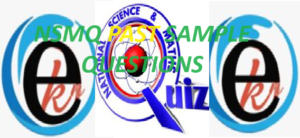Objective Test on Digestive System and Respiratory System (SHS Biology)
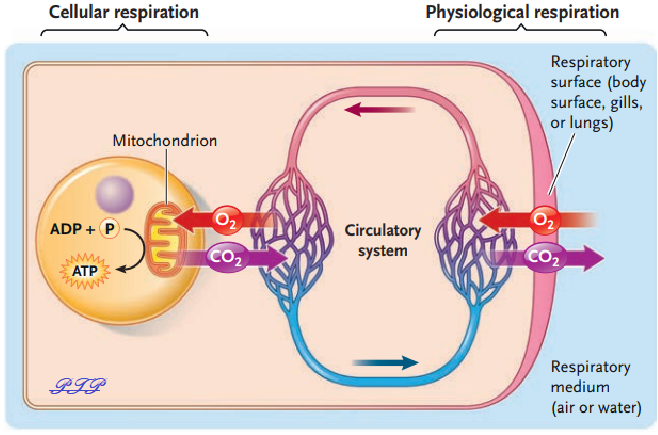
Digestive System
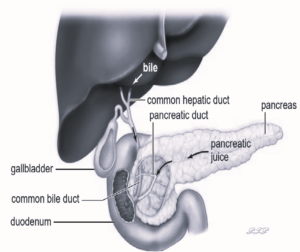
1. The reagent used for testing carbon dioxide is
A. copper sulphate solution
B. lime water
C. hydrochloric acid
D. sodium hydroxide solution
2. An example of a trace element is
A. magnesium
B. copper
C. potassium
D. calcium
3. Mutualistic bacteria in the gut of ruminants digest
A. cellulose
B. lipids
C. proteins
D. starch
4. Which of the following statements about a mixture of protein-digestion enzyme and starch solution would be correct? The protein digesting enzyme
A. digests the starch
B. leads to the production of glucose
C. leads to the production of amino acids.
D. has no effect on the starch solution
5. Deficiency of iodine in human may cause
A. cretinism
B. goiter
C. night blindness
D. sterility
6. Rickets is as a result of
A. hereditary disease
B. nutrient deficiency disease.
C. bacterial disease
D. contagious disease
7. The building of complex molecules from simple substances in organisms is known as
A. anabolism
B. catabolism
C. metabolism
D. nutrition
8. Inadequate intake of food causes
A. pellagra
B. kwashiorkor
C. marasmus
D. scurvy
9. In an enzymatic reaction involving protein, pepsin and sodium carbonate solution, the protein is referred to as
A. an enzyme substrate complex
B. a product
C. an enzyme
D. a substrate
10. A person suffering from obstruction of the bile duct is advised not to eat fats and oil food because.
A. bile emulsifies fats and oil.
B. bile digests fats and oil
C. bile adds water to digest food
D. fats and oil can only be absorbed when bile is present.
11. Infective hepatitis is a disease of the
A. heart
B. kidney
C. liver
D. stomach
12. An enzyme reaction may tend to decline when:
A. there is an increase in substrate concentration
B. the optimum temperature is attained
C. the substrate is diluted
D. the pH of the medium is altered.
13. The villi of the small intestine function to
A. allow easy flow of food substances.
B. provides friction for easy digestion.
C. allow enzymes to act faster on food
D. give it a large surface area for absorption.
14. Lipase acts on fats only if the
A. the enzyme is activated by heat
B. fats are emulsified by bile
C. pancreatic juice breaks the fats
D. medium is acidic.
15. The duodenum of a person was surgically removed. Which of the following food substances would have their digestion affected?
A. Starch and protein only
B. Starch, protein and lipids
C. Starch, peptones and maltose
D. Starch and lipids.

16. The action of ptyalin on cooked starch stops when the bolus reaches the stomach because
A. there is dilution by water
B. the temperature is not suitable
C. the pH is not suitable
D. there is dilution by gastric juice
17. If the gall bladder of a mammal is damaged, which of the following will be most seriously affected? The digestion of
A. starch
B. fats and oils
C. mineral salts in food
D. protein
18. All the following are digestive enzymes except:
A. bile
B. lipase
C. pepsin
D. maltase
19. Which of the following pairs are the products of sucrose hydrolysis?
A. Glucose + glucose
B. Fructose + fructose
C. Glucose + fructose
D. Galactose + glucose
20. The carnassial teeth are the
A. molars and premolars
B. pointed canines
C. last upper premolars and first lower molar
D. first premolar and the last molar
21. Which of the following teeth are replaced by the diastema in herbivores?
A. Incisors only
B. Incisors and canines
C. Canines only
D. Canine and premolars
22. The products of digestion are
A. large macromolecules needed by the body.
B. enzymes needed to digest food.
C. small nutrient molecules that can be absorbed.
D. regulatory hormones of various kinds.
23. Required molecules that animals cannot synthesize are called:
A. nutrients.
B. essential nutrients.
C. enzymes.
D. proteins.
24. If the fat in whole milk is ingested:
A. the stomach, with its high pH, will stimulate cells of the duodenum to hasten stomach emptying.
B. parietal cells in the stomach will absorb it.
C. in the small intestine, bile salts emulsify the fats and then lipase hydrolyzes them.
D. lactase deficiency in the small intestine would prevent its digestion.
25.Which of the following is not an essential nutrient in humans?
A. vitamin B6
B. calcium
C. glycogen
D. linoleic acid
26. The order of successive steps in digestion is:
A. absorption follows enzymatic hydrolysis.
B. secretion of enzymes follows absorption of digestive material.
C. mechanical processing follows enzyme secretion.
D. mechanical processing follows enzymatic hydrolysis.
27. An example of a digestive specialization is seen in:
A. the long intestines characteristic of herbivores.
B. the incisors being the dominant teeth in wolves.
C. the canine teeth being the dominant teeth in deer.
D. salivary lipase being made by humans.
28. The esophagus, crop, gizzard, and intestine are found in:
A. birds and mammals.
B. insects and mammals.
C. flatworms and birds.
D. earthworms and birds.
29. Which of the following accurately describes a feeding style?
A. Deposit feeders obtain nutrients from organic molecules in solution.
B. Deposit feeders scrape organic matter from solid material on which they live.
C. Fluid feeders digest organisms suspended in water.
D. Fluid feeders strain food with networks of mucus or bristles and hairs.
30. Which of the following best describes regulation of digestion?
A. Gastrin stimulates pancreatic secretion of HCl and pepsinogen.
B. Secretin stimulates gastric emptying into the duodenum.
C. . CCK stimulates gastric activity to activate the duodenum.
D. Leptin binds different hypothalamic receptors to inhibit appetite.
Respiratory System
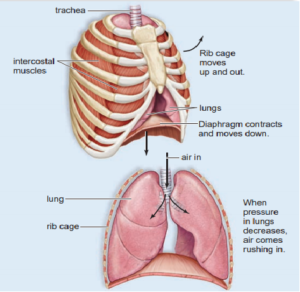
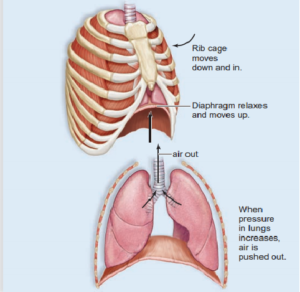
1. Which of the following describes a respiratory surface?
A. a surface consisting of multiple layers of epithelial cells
B. the exoskeleton of an insect
C. the nasal passages of a mammal
D. thin surface consisting of a single layer of epithelial cells
2. A hemoglobin O2 dissociation curve:
A. demonstrates that hemoglobin is about 50% saturated in the alveoli.
B. shifts to the left when pH rises.
C. demonstrates that hemoglobin holds less O2 when the pH is higher.
D. illustrates that oxygen saturation is not dependent on CO2 levels.
3. Oxygen enters the blood in the lungs because relative to alveolar air:
A. the CO2 concentration in the blood is high.
B. the CO2 concentration in the blood is low.
C. the O2 concentration in the blood is high.
D. the O2 concentration in the blood is low.
4. The majority of CO2 in the blood:
A. is in the form of carbonic acid and bicarbonate ions.
B. dissociates to add H1 to the blood to raise its pH to 7.4.
C. has a lower PCO2 than the PCO2 in the alveolar air.
D. increases in the lung capillaries, which have a higher pH than the tissue capillaries.
5. As a speed skater finishes the last lap of a race:
A. his diaphragm and rib muscles contract when he exhales.
B. positive pressure brings air into his lungs.
C. his lungs undergo an elastic recoil when he inhales.
D. his tidal volume is at vital capacity.
6. Tracheal systems are characterized by:
A. closed circulatory tubes that move gases.
B. spiracles that move gases between cells and body fluids.
C. body movements that compress and expand air sacs to pump air.
D. positive pressure breathing, which swallows air into the body.
7. A teenager is frightened when she is about to step onto the stage but then remembers to breathe deeply and slowly as she faces the audience. What is occurring here?
A. Interneurons in the medulla cause the rib muscles to relax, followed later by stimulation and contraction of the inter- costal muscles.
B. Signals from the pons override the initial brain stem stimuli.
C. The limbic system stabilized her emotional state, so there is no change in the mechanical movement of air.
D. The brain signals the aortic bodies in the carotid arteries to adjust the breathing rate.
8. The moisture content of expired air is
A. super saturated
B. the same as inspired air
C. less saturated than inspired air
D. more saturated than inspired air.
9. The conditions that ensure successful exchange of gases in multicellular organisms include all the following except:
A. concentration gradient across the respiratory surface.
B. presence of thin membrane as the respiratory surface.
C. fast transportation of absorbed gases.
D. presence of small, dry surface area of the respiratory organs
10. Which of the following is not true of a respiratory surface? It is
A. thick – walled
B. well supplied with blood
C. permeable
D. Moist.
11. The immediate source of energy for cell metabolism is
A. sunlight
B. ATP
C. kinetic energy
D. glucose
12. Muscle fatigue in the body of an athlete is due to
A. accumulation of carbonic acid
B. accumulation of lactic acid
C. high oxygen content
D. low pH
13. Which of the following processes makes direct use of oxygen?
A. Glycolysis
B. Fermentation
C. Electron transport
D. Krebs’s cycle
14. In aerobic respiration, oxidative phosphorylation takes place in the
A. cytoplasm
B. mitochondria
C. lysosome
D. vacuole
15. Carbon monoxide poisons tissues by
A. Constricting the blood vessels
B. killing the cells
C. combining irreversibly with haemoglobin
D. rupturing the blood vessels.
16. Aestivation in mammals enables them to:
A. withstand drought
B. regain energy
C. Undergo internal changes
D. withstand cold.
17. The role of ATP includes all the following activities except
A. provision of energy to do work
B. production of water during aerobic respiration
C. transmission of nerve impulses
D. keeping the body warm in homoeothermic animals.
18. An increase in the amount ADP in a cell during cellular respiration will result in
A. the enzyme of glycolysis being activated
B. the rate of protein synthesis being decreased.
C. the enzymes of Krebs’s cycle being inhibited.
D. electron transfer being inhibited.
19. Pyruvic acid enters the Krebs’s cycle as
A. oxaloacetic acid
B. acetyl CoA
C. coenzyme A
D. Succinate.
20. During glycolysis, a glucose molecule is split to produce two molecules of
A. succinic acid
B. pyruvic acid
C. oxalo-acetic acid
D. oxalic acid
21. During a prolonged fasting condition, the compound used for glycolysis is
A. fructose
B. glycogen
C. sucrose
D. glucose.
22. The atom within the cytochrome molecule that actually accepts and releases electrons is
A. carbon
B. iron
C. zinc
D.ATP
23. The fate of pyruvic acid in a cell depends mainly on the amount of:
A. hydrogen ions present
B. respiratory enzymes present
C. oxygen present
D. ATP present.
24. The similarity between the trachea and bronchi is that they both
A. descended into the stomach
B. both branch into finer tubes
C. contain C – shaped bands of cartilage
D. contain rings of smooth muscle fibres.
25. The substance which is regenerated at the end of the Krebs’s cycle is a
A. 2 – carbon compound
B. 3 – carbon compound
C. 4 – carbon compound
D. 6 – carbon compound.
26. Aerobic and anaerobic respiration yield:
A. 2 and 38 ATP molecules respectively
B. 38 and 2 ATP molecules respectively
C. 2 and 34 ATP molecules respectively
D. 36 and 2 ATP molecules respectively
27. Which of the following statements about anaerobic respiration is false?
A. It occurs in unicellular organisms only
B. It produces less energy than aerobic respiration
C. It leads to the production of lactic acid in mammals
D. It leads to the production of ethyl alcohol in plants.
28. In eukaryotic cells, glycolysis takes place
A. in the cytoplasm
B. within the mitochondria
C. within the nucleus
D. in the endoplasmic reticulum
29. Under what condition is lactic acid produced in the body?
A. Lack of glucose
B. Absence of oxygen
C. Lack of exercise
D. Presence of citric acid.
30. Which of the following respires through the body surface?
A. Man
B. Fish
C. Amoeba
D. Tridax
Answers
Digestive System
- B. lime water
- B. copper
- A. cellulose
- D. has no effect on the starch solution
- B. goiter
- B. nutrient deficiency disease.
- A. anabolism
- C. marasmus
- D. a substrate
- A. bile emulsifies fats and oil.
- C. liver
- D. the pH of the medium is altered.
- D. give it a large surface area for absorption.
- B. fats are emulsified by bile.
- C. Starch, peptones and maltose.
- C. the pH is not suitable.
- B. fats and oils
- A. bile
- C. Glucose + fructose
- C. last upper premolars and first lower molar.
- C. Canines only
- C. small nutrient molecules that can be absorbed.
- B. essential nutrients.
- C. in the small intestine, bile salts emulsify the fats and then lipase hydrolyzes them.
- C. glycogen
- A. absorption follows enzymatic hydrolysis.
- A. the long intestines characteristic of herbivores.
- D. earthworms and birds.
- D. Fluid feeders strain food with networks of mucus or bristles and hairs.
- D. Leptin binds different hypothalamic receptors to inhibit appetite.
Respiratory System
- D. thin surface consisting of a single layer of epithelial cells.
- C. demonstrates that hemoglobin holds less O2 when the pH is higher.
- D. the O2 concentration in the blood is low.
- A. is in the form of carbonic acid and bicarbonate ions.
- D. his tidal volume is at vital capacity.
- A. closed circulatory tubes that move gases.
- B. Signals from the pons override the initial brain stem stimuli.
- D. more saturated than inspired air
- D. presence of small, dry surface area of the respiratory organs
- A. thick – walled
- B. ATP
- B. accumulation of lactic acid
- D. Krebs’s cycle
- B. mitochondria
- C. combining irreversibly with haemoglobin
- A. withstand drought
- B. production of water during aerobic respiration
- A. the enzyme of glycolysis being activated
- B. acetyl CoA
- B. pyruvic acid
- D. glucose.
- B. iron
- C. oxygen present
- C. contain C – shaped bands of cartilage
- C. 4 – carbon compound
- B. 38 and 2 ATP molecules respectively
- A. It occurs in unicellular organisms only
- A. in the cytoplasm
- B. Absence of oxygen
- C. Amoeba



